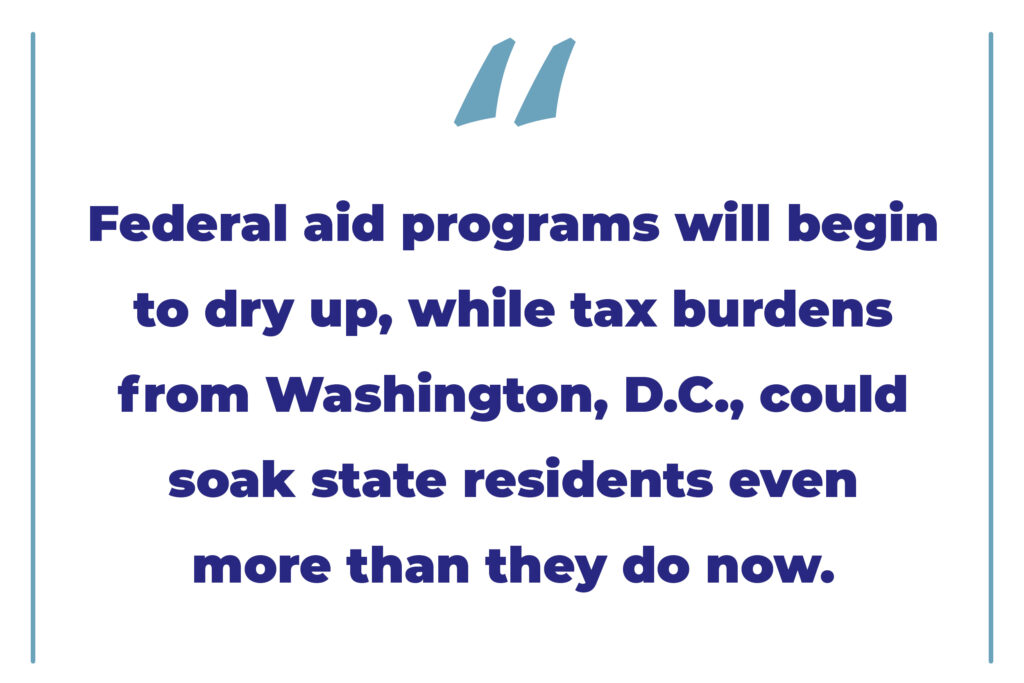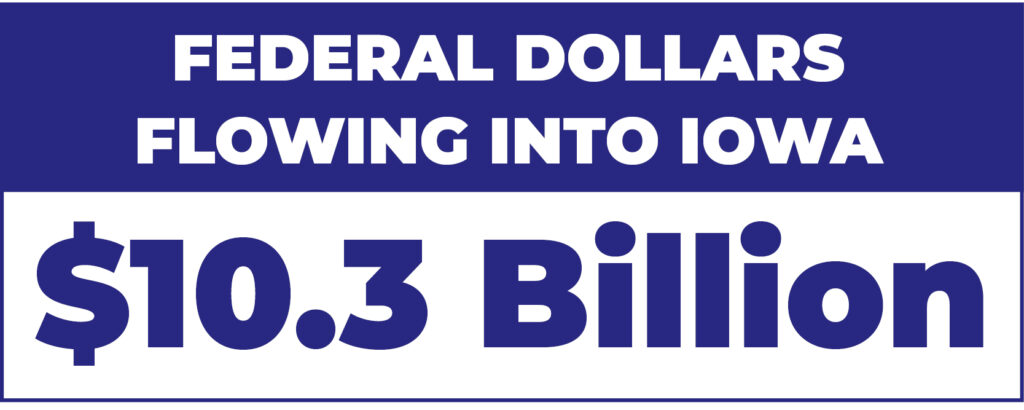This article was published in National Review.
On the current path, it seems inevitable that the federal government won’t live up to its obligations to the states. State policy-makers need to find ways to push back against Washington, D.C.
The late constitutional scholar James McClellan described federalism as a principle that the American Founders had woven “into the constitutional fabric” of the nation. Unfortunately, for decades, that federalist fabric — whose threads strongly supported a division of power between the national and state government — has been badly torn. It is not just the largess of the federal government, but also regulatory edicts and efforts to undermine key state protections, that place the future of federalism in danger. Restoring federalism is possible, but only with concerted efforts now.
The recent passage of the Fiscal Responsibility Act (FRA), which averted a crisis over the federal debt ceiling expiring, is the latest illustration of the challenges that lie ahead. The Act provides for as much as $2.1 trillion in deficit reduction via caps on federal spending growth, but the national debt is over $31 trillion and will continue to rise. The primary reason: Entitlement programs such as Social Security and Medicare have unfunded liabilities of at least $80 trillion, and were left essentially unchanged by FRA.


Federal spending skyrocketed as a result of the Covid pandemic, but the growth of the federal government has been occurring long before America went into lockdown. Since the beginning of the 21st century, national budget outlays have zoomed up 107 percent, after adjusting for inflation. Both political parties can share the blame for this out-of-control spending. The escalating debt is a serious issue that will not just impact our national security and economy, but also the states. Federal aid programs will begin to dry up, while tax burdens from Washington, D.C., could soak state residents even more than they do now. This is why states need to take the lead in restoring federalism.

Many states are demonstrating that they can govern effectively through policy competition. Under the leadership of Governor Kim Reynolds, Iowa has been a national leader in responsible budgeting, pro-growth tax policy, and expanding parental choice in education. Governor Reynolds has demonstrated that fiscal conservatism works. Despite the national economic uncertainty, Iowa’s fiscal foundation is solid. For several years, the state has run budget surpluses, the reserve accounts are full, and as a result, Iowa has enacted some of the largest income-tax-rate reductions in the nation. Last year, Governor Reynolds signed a historic income-tax-reform measure that will replace the nine-bracket progressive income-tax system with a 3.9 percent flat tax by 2026. During this legislative session, Governor Reynolds signed into law Iowa’s first state government reorganization measure that will begin to reduce the size and scope of government.
But even a state that is run as soundly as Iowa needs to be concerned with the federal government’s fiscal crisis. Iowa, just as with other states, is dependent upon the federal government for a great deal of support. It is estimated that the federal government will be sending $10.3 billion to the Hawkeye State this year to supplement funding for Medicaid, education, and other programs. Iowa’s General Fund budget is only $8.5 billion, and many programs are tied to federal funds.

Policy-makers in every state need to prepare for a serious economic crisis that could be triggered because of the federal government’s massive debt. What would happen if those federal dollars were reduced? On the current path, it seems inevitable that the federal government won’t live up to its obligations to the states. State policy-makers need to find ways to push back against Washington, D.C., while looking for ways to innovate. Furthermore, state-level leaders need to set priorities to determine what programs are essential and what programs are merely an extension of federal largesse.
States such as Indiana, Utah, Idaho, and Mississippi have also developed a federal-funds inventory to better understand the impact of federal funds within their states. This is the first step to understanding where each state’s biggest fiscal vulnerabilities may be vis-à-vis Washington, but other steps need to follow. School choice, for example, can deliver better experiences for students while ensuring parents can better afford the educational system. Concepts such as technical auditing can keep transportation spending focused on priorities, while federal waivers of Medicaid mandates can allow states to find the most efficient ways to deliver health care. State legislatures should also demand that their congressional delegations begin to rein in spending.
States need to be prepared for the approaching fiscal crisis because a time is coming when true austerity may force Uncle Sam to cut spending, which will directly impact the fiscal structure of the states. Restoring federalism is a constitutional solution that will help restore fiscal sanity
Pete Sepp is President of the National Taxpayers Union.
